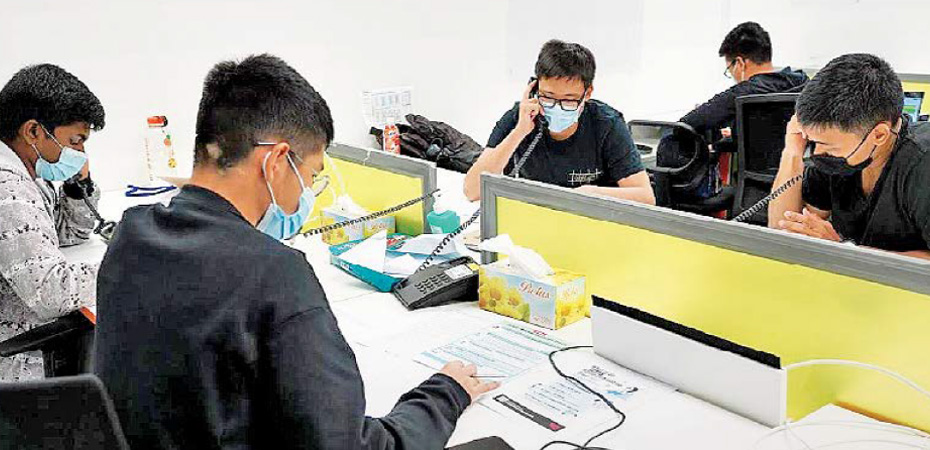
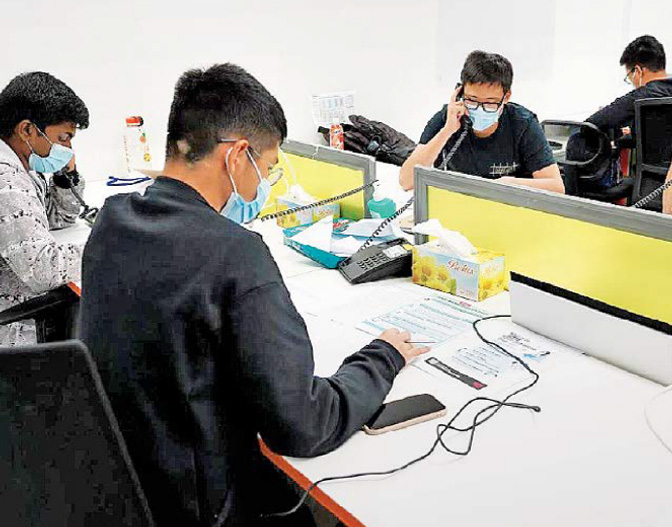
NSFs manning hotlines at the Home Recovery Programme call centres.
Source: MINDEF
HRTG quickly identified the need for a critical shift in order to restore public confidence in the HRP. Instead of focusing on clinical outcomes, HRTG took a human-centric approach that was more relationship-based, handling one patient at a time. This patient-first mindset would drive all of HRTG's operations, especially in catering to vulnerable groups which required tailored and differentiated care, and in managing appeals and outliers. With fear and anxiety colouring the minds of COVID-19 patients and their families, HRTG knew that it was not enough to have a robust system. Empathetic communication with the patients was critical if the HRP was to be a success.
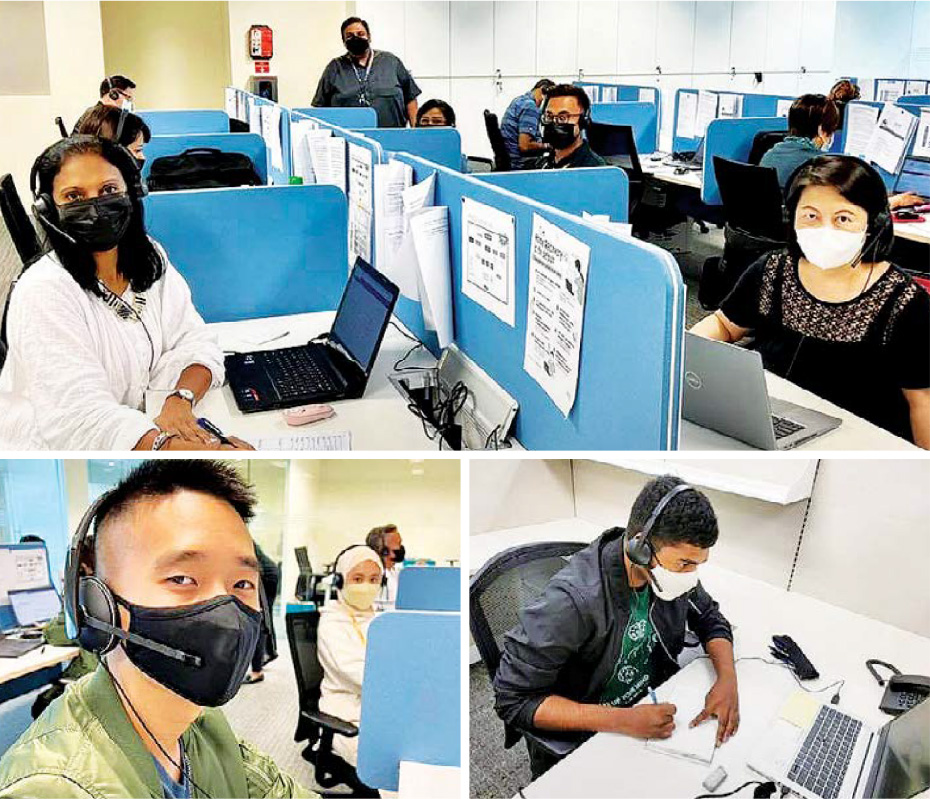
Home Recovery Buddies, comprising a mix of MOH and SAF personnel.
Source: MOH Facebook Page
The first order of business was to establish a Case Management System so that all cases could flow through and be handled appropriately. The existing call centres were beefed up so that check-ins could be expedited and there could be confidence in the accuracy of the information collected. Hotlines were expanded to meet the increased requests for assistance and redress. All the additional manpower came from full-time National Servicemen (NSFs) who were activated at short notice and quickly trained. An important part of their training was to learn how to speak with empathy to callers.
The first cohort was tasked to tackle the fast growing backlog of cases. They contacted COVID-19 patients who had recovered and those who were still ill and answered their questions, equipped with a list of Frequently Asked Questions (FAQs) cobbled together from the MOH websites. Although the FAQs were continuously updated and refined, the NSF Home Recovery Buddies inevitably had to grapple with information gaps while trying to answer some questions. Challenging cases were escalated to their superiors and policy guidelines clarified with their MOH colleagues. They helped one another by speaking to callers in their mother tongues when the callers could not communicate in English. Their empathy was tested by difficult callers, but they supported one another in managing difficult calls, working as a team, sharing information and tips for handling difficult callers. While their patience was tested when they were abused over the phone, they could understand the fear and anxiety of the callers and this helped them to stay calm and professional.
Some of them (patients on the HRP) don't know what's going to happen or wonder why no one is telling them where to go. I could see where their frustrations and anxieties were coming from, and I would try to see what I could do to help them.
CPL Luth Danish
NSF from 35 SCE

Home Recovery Buddy CPL Luth Danish at work.
Source: MINDEF
HRTG also had to deal with patients who were frustrated over being passed from one agency to another during the home recovery process. To mitigate the problem, HRTG implemented Zendesk, a centralised cloud-based system to manage HRP patients' journey from notification to discharge. The design of Zendesk placed the patient's experience at the heart of the system, and allowed HRTG to follow up efficiently with patients throughout the process, including on their unique needs and requests. This was especially important for patients who needed customised care by social agencies. SMS notifications allowed all patients to be onboarded and reminded of medical follow-ups. With Zendesk, no case would fall between the cracks when transiting between Cells and Centres.
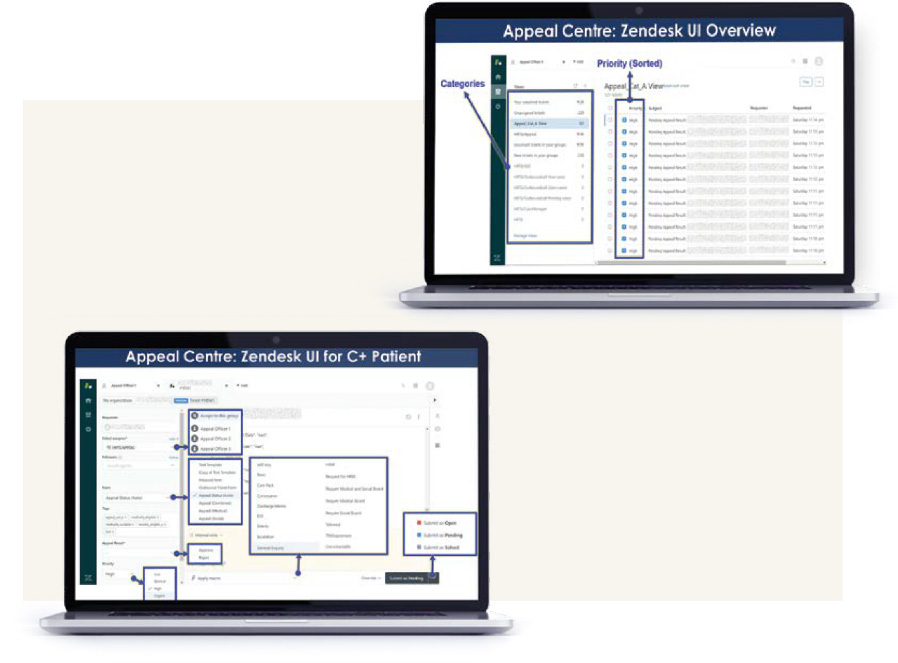
The Zendesk interface.
Source: MINDEF
It soon became clear to HRTG that it was not possible to manage every case in the same way, as patients had many different social and medical needs. The team implemented a differentiated care approach.
Patients identified as needing “Basic Care” were a majority; they were well supported and needed only basic information and access to medical resources. Those identified as needing “Enhanced Care” were from vulnerable and high-risk patient groups with more medical or social needs, such as the elderly, pregnant women and children. Significant efforts were made to ensure that such patients were not left out in the triage or appeal process, and would be given greater attention and resources through the Care Management Centre established by HRTG.

|
REDESIGNED HOME RECOVERY PROGRAMME |
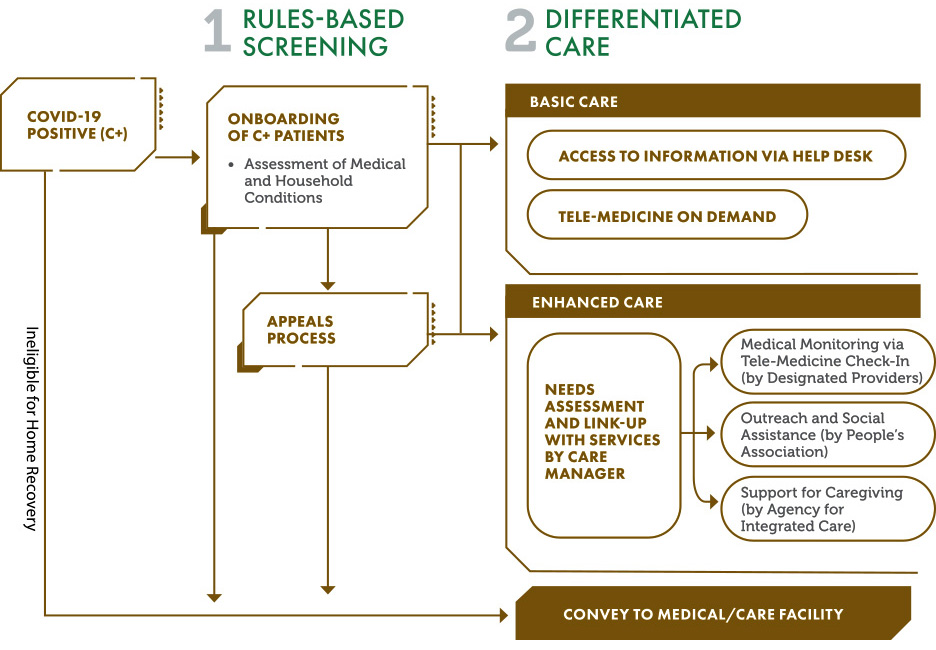
The Care Management Centre was formed when Ms Teoh Zsin Woon, Second Permanent Secretary, Public Service Division (PSD), offered HRTG resources and expertise for social outreach to vulnerable groups. The centre set up inter-agency partnerships to support vulnerable patients. Dedicated volunteers from PSD and the Silver Generation Office made daily checks on elderly patients. Community partners, such as People's Association, the Agency for Integrated Care and Ministry of Social and Family Development (MSF) helped PSD volunteers in providing support for HRP patients at the constituency level. For patients with special needs, HRTG worked with MOH to expand HRP support to groups such as the sensory-impaired, illiterate or handicapped individuals. The cooperation with relevant handicap associations and literacy foundations to improve patient support continued after the SAF handed the operations back to MOH.
HRTG sought to better understand the demographics of the Singapore population so that it could re-engineer to improve its support structure as needed. It worked hard to ensure that every patient received medical attention. The Data Management Centre, which was set up to help HRTG make better decisions using data on the HRP landscape, put in great effort to ensure that all patients were accounted for. Using the SAF Action Learning Process, every HRTG centre was constantly cross-learning and reviewing its processes whenever there were unique cases.
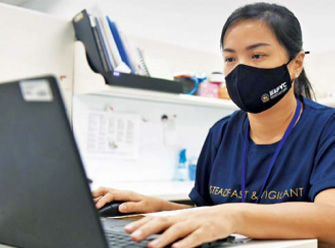
SV1 Lim Ai Buay Ivy from the SAF Volunteer Corps in the Data Management Team, working on updating data in time for quick analysis.
Source: MINDEF
HRTG also reviewed the process for appeals, and established an Appeals Centre to better manage patients who were not eligible for HRP but who wished to recover at home. The Appeals Centre had to carefully balance between the patient's autonomy and risks to public health. Managing appeal cases was a complex operation requiring a fine balance of sensitivity and firmness. More experienced civil servants from across PSD staffed the Appeals Centre, and swiftly attended to the backlog and surge in appeals.
Click HERE to view the story of a COVID-19 patient on the Home Recovery Programme.